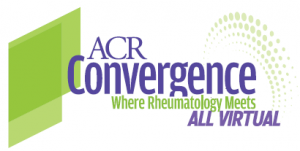According to Dr. von Scheven, a retrospective cohort study by Mannion et al. on biologic switching found that one-quarter of JIA patients are switching biologics and noted that additional research is needed to determine optimal timing and preferred sequencing of biologics.4
In a treat-to-target study, Klein et al. found that many patients reached minimal disease activity or remission at 12 months and approximately half of the studies’ patients achieved target without a biologic agent.5 A separate commentary by Schoemaker et al. challenged readers to consider the limitations of the current treat-to-target approach, such as the absence of an agreed-upon optimal target, the need to address goals beyond disease activity, such as minimizing comorbidities, and the need to consider an individual patient’s personal targets.6
 Several studies she discussed addressed PFAPA (i.e., periodic fever, aphthous stomatitis, pharyngitis, adenitis), including the role of tonsillectomy, which Burton et al. found beneficial but noted that patients also recover spontaneously, and medication can reduce episode severity.7 Regarding PFAPA treatment, Dr. von Scheven reviewed a study using the latest CARRA (Childhood Arthritis and Rheumatology Research Alliance) consensus treatment plans and emphasized that larger comparative effectiveness studies should allow us to directly compare outcomes across four treatment options—antipyretic, corticosteroid, prophylaxis and surgery—to identify best treatments for PFAPA.8
Several studies she discussed addressed PFAPA (i.e., periodic fever, aphthous stomatitis, pharyngitis, adenitis), including the role of tonsillectomy, which Burton et al. found beneficial but noted that patients also recover spontaneously, and medication can reduce episode severity.7 Regarding PFAPA treatment, Dr. von Scheven reviewed a study using the latest CARRA (Childhood Arthritis and Rheumatology Research Alliance) consensus treatment plans and emphasized that larger comparative effectiveness studies should allow us to directly compare outcomes across four treatment options—antipyretic, corticosteroid, prophylaxis and surgery—to identify best treatments for PFAPA.8
She described new clinical research in lupus care for pediatric patients by Sivaraman et al., which found that previsit planning and clinical pharmacist support improved vaccination rates in the rheumatology clinic.9 “Now their challenge is to sustain these gains, and our challenge is to do the same in our clinics,” Dr. von Scheven said.
Research from Li et al. on a pilot study using CARRA consensus treatment plans for localized scleroderma found that patients improved in all three consensus treatment plans—methotrexate monotherapy, methotrexate with supplemental intravenous (IV) methylprednisolone for three months, and methotrexate with daily oral steroids—with over 75% having a major or moderate improvement compared to baseline.10
She also highlighted findings from a retrospective, single-site study by Do et al., which found that publication of CARRA consensus treatment plans have led to a change in treatment for pediatric morphea.11
Several 2020 papers Dr. von Scheven discussed addressed therapeutics for Kawasaki disease, including a comparative study by Crayne et al. that found infliximab monotherapy should be considered as second-line treatment for patients who fail to respond to initial intravenous immunoglobulin.12 A separate study by Miura et al. on infliximab for Kawasaki disease found it was well tolerated and effective for acute Kawasaki disease refractory to conventional therapies.13

